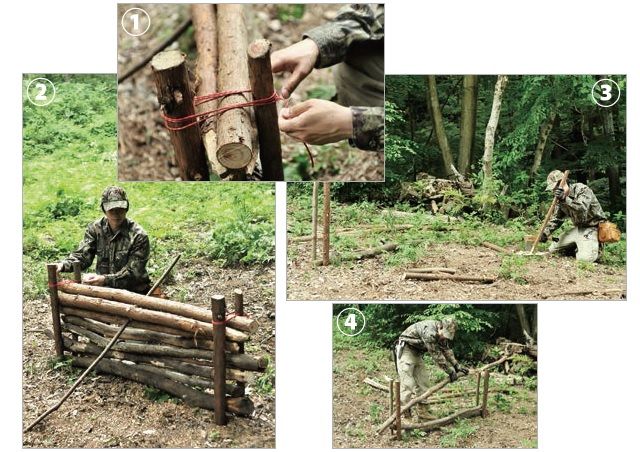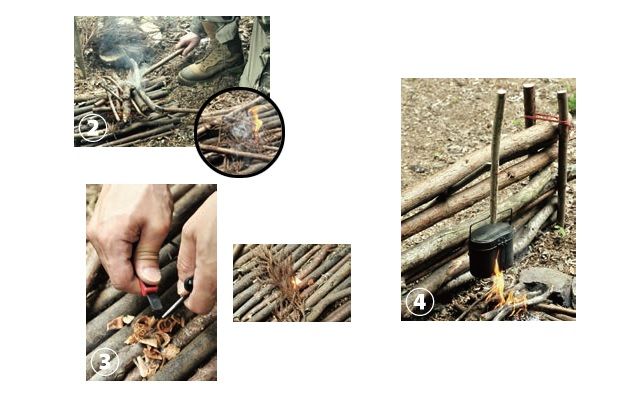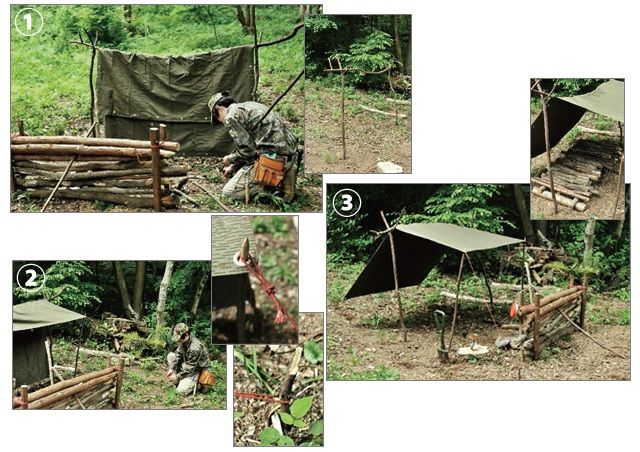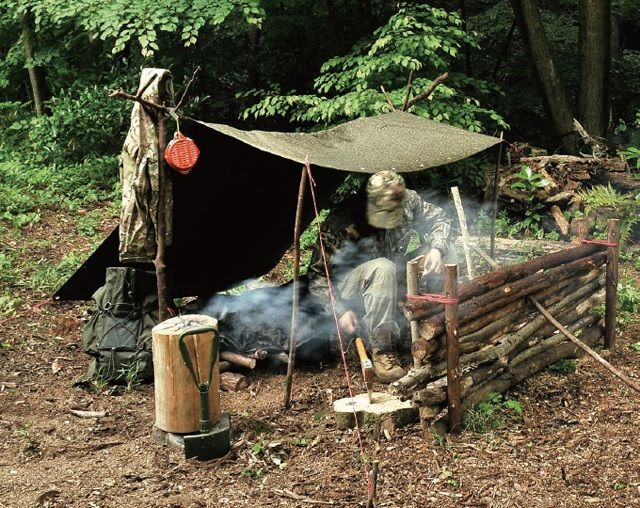
"Introduction to Bushcraft" Part.1

Bushcraft, sometimes translated as "wisdom of life," is a camp style that follows the skills of its predecessors to live in the wilderness. Since it is procured locally not only from food but also from the place of living, it is naturally required to have the appropriate "self-help". However, at least as long as you live in your own living space, you have the freedom to be unrestrained by anyone. There is no straitjacket in the way of life that eliminates waste to the utmost limit, and even in modern times, we can still see the tools that people need to live.
Cutlery. The division of labor has progressed due to the currency system, and it has become far from us as we live in the city. But in the end, it was just that someone was in charge of it as much as we were away from us. Through the camp style of bushcraft, I want to get the knife back in my hand again.
http://www.sagawa-exp.co.jp/takao100pj/
PROCESS 01
Increase windshield effect and thermal efficiency
Fire reflector
A fire reflector (heat reflection wall) complements the hanging shelter that is easily affected by the outside air temperature. By taking a bonfire space between the shelter and this wall, the heat of the bonfire can be efficiently taken into the shelter and the wind can be prevented from blowing in. This time, we also used this wall to prepare a pot crane that is convenient for cooking.

(1) When the logs are piled up to an appropriate height, tying the pair of stakes with a thin pull will increase the sense of stability. This time, a pot crane was also installed using the gaps between the stacked logs, so it was necessary to bring the logs closer together.
(2) Overall image of the fire reflector. There are some gaps, but I later filled them with twigs.
③ First, prepare four stakes that will be the pillars of the wall. Choose a small, straight log as the material, and use an ax to sharpen one end so that it can easily pierce the ground.
④ Arrange logs and branches of appropriate length between the four stakes. If you want to enhance the heat reflection effect, it is better to make two rows of logs and fill them with soil.
PROCESS 02
Make cooking on a bonfire easier
Height adjustable pot hanger
For bonfires where it is difficult to control high to low heat, prepare a pot hanger with adjustable height to facilitate cooking. Height adjustment is supported by making multiple bail notches, which is the simplest of all notches, which is an indispensable skill in bushcraft. With this tool, you can cook well even on a compact fire bed with unstable flames.

① To make a bail notch, attach a cross with a sufficient depth with a knife to a branch of an appropriate thickness (easy striking with a knife ridge with a stick), just cut off three unnecessary surfaces. Sharp hook shape is completed. This time it was adjusted to 3 stages according to the height of the pot crane. A notch hanging pot and a food canister can be made by scraping three sides in the opposite direction from a veil notch for height adjustment.

(2) When using cedar leaves that have a short burning time but a high flame, it is recommended to lift the firewood as shown in the photo, blow in air, and burn it with flames, as it will make a fire bed efficiently.
(3) Magnesium fire lighter and fat wood were used to start the fire, and dead cedar leaves, which can be obtained anywhere in Japan, were used for burning. Fat wood may be a piece of wood boiled in wax.
④ The kitchen space this time using a fire reflector, a pot crane, and a pot hanger has a fairly systematic finish.
PROCESS 03
Cheap simple shelter utilizing military release products
Poncho
A simple shelter that uses the poncho and solo tent of the East German Army, which has appeared frequently in this magazine. The hanging type using tarps and sheets can usually be set up with a single rope, but this time we made a framework with branches to increase the strength. When assembled with a fire reflector, you can spend a surprisingly comfortable time even in the chilly season.

① If you have two branches at Y and one long branch, you can set up a relatively strong shelter. The point is how to pierce the branch at Y o'clock deep into the ground, and the end of the branch is sharply arranged to make a weapon.
(2) For the poles and pegs that fix the roof, naturally use the branches that have fallen around. Adjust the tension of the poncho by fine pulling. Even during peg down, the strength will change later with the effort of sharpening the tip of the branch.
(3) By properly allocating the roof and wall parts, we were able to secure a certain amount of sleeping space. The cot is made of logs made in the previous issue, but each log is made with an ax so that it does not roll off.
PROCESS 04
If you have a chainsaw, it will be completed in no time
Yatukan Kuntira
A bonfire made from logs, also known as a Swedish torch, which is popular in Japan as a "wooden candle." The heating power and burning time vary depending on the number of cuts made with a chainsaw, but even if left unattended, it burns for several hours, so it can also be used for heating. It is a suguremono that can be cooked by lighting it and placing a kettle or frying pan on the log.

(1) Basically, the logs to be used for Yatukan Kuntira should be firmly fixed. The standard number of cuts is about 4, 6 or 8 divisions, and the smaller the number, the longer it burns with less heat.
(2) The ignition method is to stuff dead leaves between the cuts and ignite. Once the log is lit, the chimney effect takes in air from the notches on the sides and maintains the heat quite well, making it suitable for cooking.


To the top of "Fielder x ACTIVITY JAPAN serialization project"